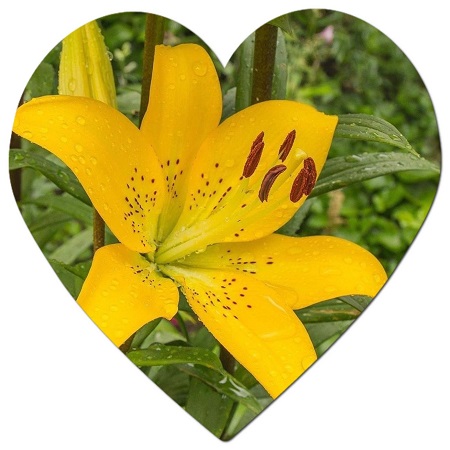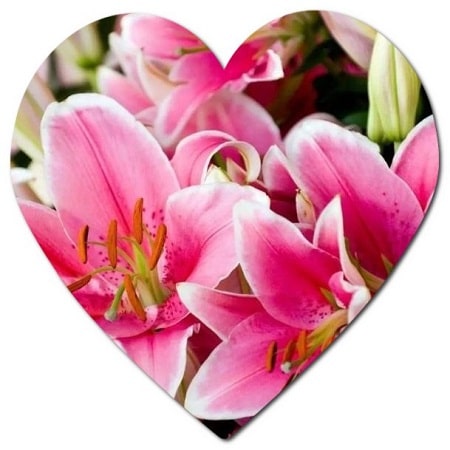Where is the Motherland of the Lily Flower? The African Lily, whose homeland is South Africa, is a daffodil. The African Lily, which can be grown both in the garden and in pots, can grow up to 60 cm. Its leaves are evergreen and sword-shaped. The true homeland or native region of the lily flower is challenging to pinpoint precisely because lilies are a diverse group of flowering plants with species distributed across various continents.
Lilies are found in North America, Europe, Asia, and parts of Africa. Different species of lilies have adapted to diverse climates and ecosystems, making them a widespread and cosmopolitan group of plants. Some lilies are native to specific regions, while others have been cultivated and spread by humans. For example:

- North America: Several lily species are native to North America, such as the wood lily (Lilium philadelphicum) and the Turk’s cap lily (Lilium superbum).
- Asia: Asia is considered a major center of diversity for lilies. Many species, including some of the most famous varieties, originate from various parts of Asia.
- Europe: Some lily species are native to European regions.
- Africa: There are lily species native to parts of Africa, although they may not be as diverse in this continent compared to others.
- Hybridization and Cultivation: Over centuries, humans have engaged in hybridizing and cultivating lilies, leading to a vast array of varieties that might not have a specific native region.
In summary, lilies are a globally distributed group of plants, and their “homeland” is a collection of regions across different continents where various species have naturally evolved. The cultural and horticultural history of lilies involves movement and cultivation by people, further contributing to their presence in gardens around the world.
How Many Types of Lily Flowers Are There?
There are many types of lily flowers, and they belong to the genus Lilium, which includes numerous species and hybrids. The classification of lilies is complex, and they are often categorized into several main divisions based on their characteristics. Here are some of the primary types of lilies:

- Asiatic Lilies (Lilium asiatic):
- These lilies are known for their upward-facing flowers with bold and vibrant colors. They come in various hues, including red, orange, yellow, and pink.
- Oriental Lilies (Lilium orientalis):
- Oriental lilies are renowned for their large, fragrant flowers and often have intricate patterns. They come in shades of white, pink, and red.
- Trumpet Lilies (Lilium longiflorum):
- Trumpet lilies have large, trumpet-shaped flowers and are often fragrant. They usually bloom in shades of white.
- Easter Lilies (Lilium longiflorum):
- Easter lilies are a specific type of trumpet lily with white, trumpet-shaped flowers. They are often associated with the Easter holiday.
- Tiger Lilies (Lilium lancifolium):
- Tiger lilies are characterized by their unique orange flowers with dark spots. They have a distinctive appearance and are well-known in gardens.
- Martagon Lilies (Lilium martagon):
- Martagon lilies, also known as Turk’s cap lilies, have recurved petals and a unique shape. They are often found in shades of pink and purple.
- Daylilies (Hemerocallis):
- Although not true lilies, daylilies are often included in discussions about lilies. They belong to a different genus. Daylilies have trumpet- or funnel-shaped flowers and are known for their extended blooming periods.
- Candidum Lilies (Lilium candidum):
- Candidum lilies, also known as Madonna lilies, have white, fragrant flowers and are often associated with purity.
- Species Lilies:
- This category includes various lilies found in the wild, such as Lilium regale and Lilium michiganense.
- Hybrid Lilies:
- Gardeners and horticulturists have created numerous hybrid lilies, combining different species for unique colors, patterns, and characteristics.
These are just a few examples, and within each type, there are numerous cultivars and varieties. Lilies are diverse and versatile flowers, making them popular choices for gardens, floral arrangements, and landscaping.
What is the wild lily flower?
There are many species of wild lilies found in nature, and their characteristics can vary widely. The term “wild lily” generally refers to lilies that grow naturally in their native habitats without human cultivation. Here are a few examples of wild lily species:
- Wood Lily (Lilium philadelphicum):
- The wood lily is native to North America and can be found in a variety of habitats, including meadows, open woods, and prairies. It typically has orange to red flowers.
- Canada Lily (Lilium canadense):
- Also native to North America, the Canada lily has nodding, bell-shaped flowers that are typically orange to red with dark spots. It is often found in moist woodlands and meadows.
- Turk’s Cap Lily (Lilium superbum):
- This lily species is native to North America and is known for its recurved, Turk’s cap-shaped flowers. It has a range of colors, including orange and yellow, and is found in wet meadows and along streams.
- Martagon Lily (Lilium martagon):
- The martagon lily, or Turk’s cap lily, is native to Europe and Asia. It has distinctive, nodding flowers with recurved petals. Colors can range from pink and purple to white.
- Tiger Lily (Lilium lancifolium):
- Native to Asia, the tiger lily is known for its orange flowers with dark spots. It has naturalized in some parts of North America.
- Madonna Lily (Lilium candidum):
- Native to the Balkans and the Middle East, the Madonna lily has white, trumpet-shaped flowers and is often associated with religious symbolism.
- Regal Lily (Lilium regale):
- Native to western China, the regal lily has large, fragrant, trumpet-shaped flowers that are white with a yellow throat.
- Humboldt’s Lily (Lilium humboldtii):
- Native to the western United States, Humboldt’s lily has nodding, orange to red flowers and is found in a variety of habitats, including grasslands and forests.
These are just a few examples, and there are many more species of wild lilies with different characteristics and distributions around the world. Wild lilies are an important part of natural ecosystems, and they are also valued for their beauty and unique features in gardens and landscapes.
